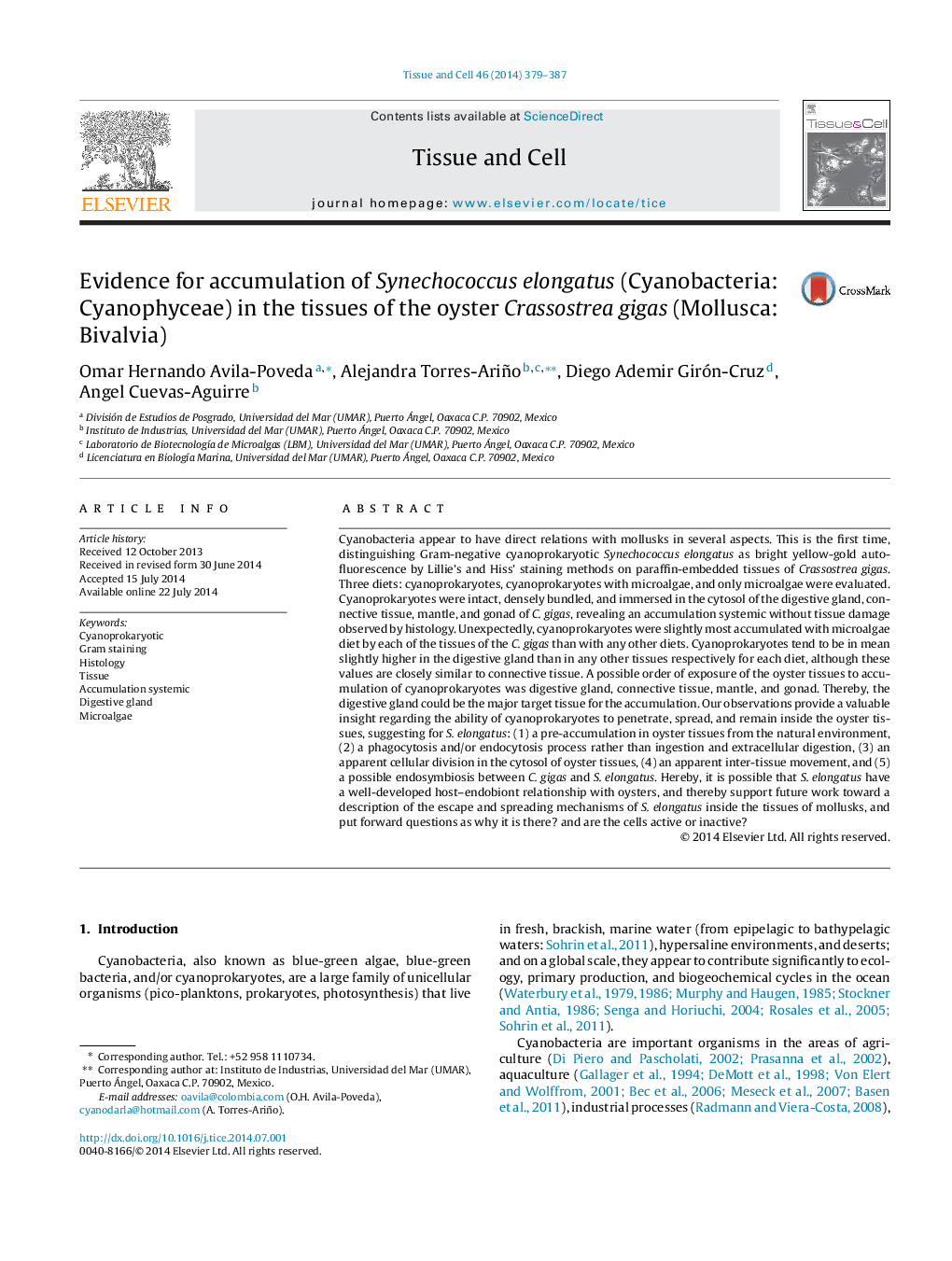| کد مقاله | کد نشریه | سال انتشار | مقاله انگلیسی | نسخه تمام متن |
|---|---|---|---|---|
| 2203781 | 1100522 | 2014 | 9 صفحه PDF | دانلود رایگان |

• Synechococcus elongatus inside of tissues of Crassostrea gigas was observed.
• Cyanobacterium were densely bundled and immersed in cytosol of the oyster tissues.
• Cyanobacterium S. elongatus revealed an accumulation systemic in oyster tissues.
• Digestive gland of oyster is the major target for the cyanobacterium accumulation.
• A possible endosymbiosis between C. gigas and S. elongates is hypothesized.
Cyanobacteria appear to have direct relations with mollusks in several aspects. This is the first time, distinguishing Gram-negative cyanoprokaryotic Synechococcus elongatus as bright yellow-gold autofluorescence by Lillie's and Hiss’ staining methods on paraffin-embedded tissues of Crassostrea gigas. Three diets: cyanoprokaryotes, cyanoprokaryotes with microalgae, and only microalgae were evaluated. Cyanoprokaryotes were intact, densely bundled, and immersed in the cytosol of the digestive gland, connective tissue, mantle, and gonad of C. gigas, revealing an accumulation systemic without tissue damage observed by histology. Unexpectedly, cyanoprokaryotes were slightly most accumulated with microalgae diet by each of the tissues of the C. gigas than with any other diets. Cyanoprokaryotes tend to be in mean slightly higher in the digestive gland than in any other tissues respectively for each diet, although these values are closely similar to connective tissue. A possible order of exposure of the oyster tissues to accumulation of cyanoprokaryotes was digestive gland, connective tissue, mantle, and gonad. Thereby, the digestive gland could be the major target tissue for the accumulation. Our observations provide a valuable insight regarding the ability of cyanoprokaryotes to penetrate, spread, and remain inside the oyster tissues, suggesting for S. elongatus: (1) a pre-accumulation in oyster tissues from the natural environment, (2) a phagocytosis and/or endocytosis process rather than ingestion and extracellular digestion, (3) an apparent cellular division in the cytosol of oyster tissues, (4) an apparent inter-tissue movement, and (5) a possible endosymbiosis between C. gigas and S. elongatus. Hereby, it is possible that S. elongatus have a well-developed host–endobiont relationship with oysters, and thereby support future work toward a description of the escape and spreading mechanisms of S. elongatus inside the tissues of mollusks, and put forward questions as why it is there? and are the cells active or inactive?
Journal: Tissue and Cell - Volume 46, Issue 5, October 2014, Pages 379–387